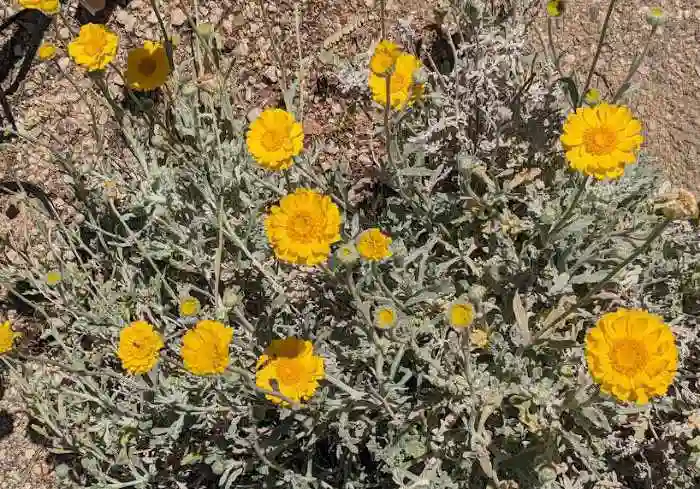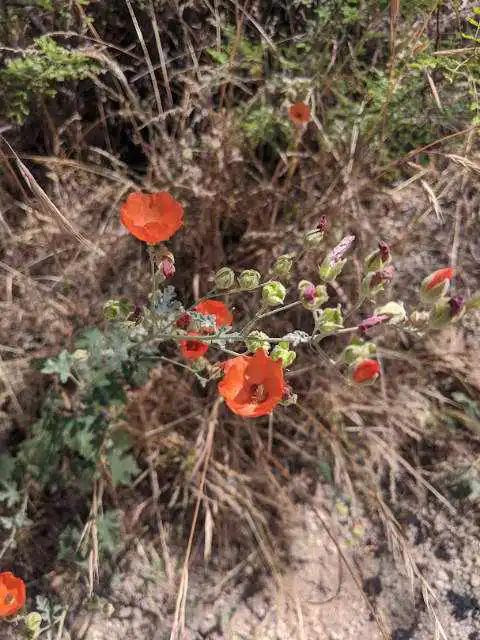Ready to create a pollinator garden in your Arizona garden? Pollinators are attracted to specific plants, and choosing the right ones is the first step in creating a welcoming garden.
In Arizona, we’re fortunate to have a variety of native plants that thrive in our climate and are magnets for pollinators.
Create a Pollinator Garden in Arizona
Creating a pollinator garden will attract pollinators like bees, butterflies, and birds not only bring life and color to your garden but also play a crucial role in keeping your plants and our food supply healthy and productive.
This post is your go-to guide for creating a pollinator paradise in the desert. With practical advice and specific plant recommendations, you’ll learn how to design a garden that’s not only beautiful but also buzzing with life.
This post may contain affiliate links. Please see my disclosure policies. If you purchase after clicking an affiliate link we may receive small commission at no cost to you. As an Amazon Associate I earn from qualifying purchases.
Garden Pollinators
To learn more about pollinators for your garden visit our post on: Boost Your Garden with these Pollinators.

How to Choose the Right Plants for Pollinators
Using native plants is key to a successful pollinator garden. These plants are adapted to your local climate and soil, and they provide the best food sources for your local pollinators.
Native bees or wild bees or more effective at pollinating our plants. Some great native plants for Arizona includes:
Pollinator Plants for Bees
Bees love flowers that are rich in nectar and pollen. Choose native plants like Desert Marigold, Globe Mallow, and Saguaro Cactus. These plants are well-adapted to our desert environment and provide the sustenance bees need throughout the year.

Interestingly, once plants are pollinated they also reduce in scent. Some cactus flowers also deepen in color if they remain unpollinated for more than a day. Native bees or wild bees or more effective at pollinating native plants.
A Pollinator Garden for Butterflies
Butterflies are drawn to bright, colorful flowers with flat, open shapes. Consider planting Desert Milkweed, Globe Mallow, Arizona Lupine, Desert marigolds, and Penstemon.
These plants not only offer nectar but also serve as host plants for caterpillars, providing a complete life cycle habitat for butterflies.
Milkweed is essential for monarch butterflies, as it’s the only plant where they lay their eggs. For more information on creating a butterfly garden visit our post: How to Create an Arizona Butterfly Garden in 6 Easy Steps.
Pollinator Plants for Birds
Birds, especially hummingbirds, are attracted to tubular flowers in vibrant shades of red, orange, and pink. Try adding plants like Red Yucca, Chuparosa, and Ocotillo to your garden.
These plants are drought-tolerant and offer the perfect energy boost for our feathered friends. Fore more information on attracting hummingbirds check out our post on: How to Attract Hummingbirds to your Yard.
How to Create a Pollinator-Friendly Habitat
Beyond planting the right flowers, there are a few more steps you can take to make your garden irresistible to pollinators.
Provide Water
Pollinators need water, especially in our dry desert climate. A shallow birdbath with a few stones for perching will provide a refreshing drink. Just be sure to keep the water clean and fresh.
Avoid Pesticides
Pesticides can be harmful to pollinators. Instead of reaching for chemical solutions, consider using natural alternatives like neem oil or introducing beneficial insects that prey on garden pests.
Create Shelter
Pollinators need safe places to rest and nest. Leave a few bare patches of soil for ground-nesting bees and consider adding a bee house to your garden. For butterflies, small piles of rocks or wood can offer a cozy spot to bask in the sun or seek shelter.
BIGBATBOX – Wooden Bat House Kit
Large bat house has an efficient two chamber design that offers an ideal roosting area with excellent conditions for bats to live in
Plan for Continuous Blooming
One way to keep pollinators coming back is to ensure there’s always something blooming in your garden. Plan your garden so that different plants bloom at different times of the year, providing a consistent food source.
Check out our Month-by-Month Calendar of What’s Blooming in Phoenix.
Planting Tips
Now that you’ve picked your plants, here are some tips to ensure they thrive:
Plant in clusters rather than single plants. This makes it easier for pollinators to find them. Many pesticides can harm pollinators. Look for natural pest control methods instead.
Books You May Be Interested in:
The Pollinator Victory Garden
Win the War on Pollinator Decline with Ecological Gardening; Attract and Support Bees, Beetles, Butterflies, Bats, and Other Pollinators
Pollination: The Enduring Relationship between Plant and Pollinator.
The Simple Joy of a Pollinator Garden
Creating a pollinator-friendly garden in Arizona is more than just planting flowers—it’s about building a thriving ecosystem in your own backyard.
So grab your garden gloves and a trowel let’s start digging into the wonderful world of pollinator gardening. Your garden will thank you, and so will the bees, butterflies, and birds that call it home.
Happy gardening!







